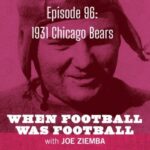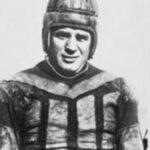In professional sports, there have been numerous examples of brothers leading their teams to distinction and success. And while these siblings may not always be representing the same team, the mere fact that multiple players from the same family reached the highest level of athletics is indeed impressive.
In baseball, we have seen the DiMaggio and the Alou brothers excel for their teams, as did the Barbers, and the Mannings in the NFL. There have been several sets of brothers in the National Basketball Association including identical twins such as Horace and Harvey Grant, and Dick and Tom Van Arsdale.
Speaking of identical twins, I once had the pleasure of playing some hoops in those lonely post-collegiate days on the south side of Chicago with twin brothers. While we won’t mention their names to protect the innocent, as well as protecting them from any possible plaintiffs still seeking damages from their sharp elbows all of these years later, we’ll simply call them the Fritz boys.
The Fritz Boys
These gentlemen were identical 6-8 twins with both different playing styles and different personalities. One brother, who was nicknamed “Darth” for obvious reasons, was a very aggressive big man who often found himself in foul trouble at the half for minor infractions such as muggings, elbows to the head, and slight pushes into the baseline walls.
This problem was easily solved at halftime when his brother, known as the “Good Fritz,” would simply exchange jerseys with his sibling. The Good Fritz was more of a finesse player with a deadly outside shot, but one who rarely experienced foul trouble.
As such, Darth could collect three or more fouls in the second half, easily frightening any inside opposition who surmised that taking an ill-advised outside shot was much safer than a possible beheading by driving on Darth, also known as the “Mean Fritz.”
After the game was over, both Fritz boys were very pleasant during team discussions although the Good Fritz wouldn’t stop talking until addressing his sixth beer, while Mean Fritz wouldn’t start talking until he reached that same milestone.
Remember the Horwitz Brothers?
But all of this chatter about brothers merely serves as the introduction to this episode of “When Football Was Football.” Our program today will focus on a pair of brothers who were nationally known for their stardom on the fields of the Ivy League, but who also demonstrated exceptional ability on the professional level with the Chicago Cardinals in the early days of the National Football League.
And yet, long after they left this planet, the brothers continued to have a presence at every single game of the NFL, even if no one really knew their name (or any of their names)! This surprising story began way back in the late 19th century when the brothers were born in Chicago.
Perhaps you remember the football-playing Horwitz brothers?
Or maybe you might recall them as the McMahon brothers of the Chicago Cardinals?
If not, then maybe the name Horween will certainly ring a bell?

While this revolving door of names may sound mysterious and intriguing, there were valid reasons for the boys to answer to each of those labels, both before and during their playing careers.
The oldest brother was born on August 3, 1896, as Ralph Horwitz. His younger brother Arnold Horwitz arrived on July 3, 1898, and both resided with their parents Isidore and Rose in Chicago where the brothers drew acclaim as star athletes at Francis Parker High School on the north side.
Horween Is the Equal of Any Halfback
Since their father established a prosperous business in Chicago called I. Horween and Company in 1905, it was not an issue to send both of his sons to Harvard following high school. By that time, the family name had been changed to Horween, probably to avoid possible prejudicial concerns that might occur in the future.
Anyway, Ralph became a solid 200 lb. runner and kicker for Harvard after entering the school in 1914. The Champaign Daily News stated: “Ralph Horween is regarded as the equal of any halfback in the country.” Arnold joined the Crimson in 1916 as a freshman and demonstrated skills on both sides of the ball for the Harvard rookie squad.
Following his enrollment, the Boston Globe reported on Arnold’s prep career: “At his high school, the Francis Parker in Chicago, he played about every position on the football team, finally filling the fullback’s berth as his rightful possession. Incidentally, he did his part in track and baseball, as a shot-putter and [baseball] twirler.”
It should be noted that both of the brothers interrupted their academic careers at Harvard to join the US Navy during Worl War I, with each earning the rank of Lieutenant from 1917-1919.
With the Horween sibling tandem back following the war, Harvard marched through the 1919 season undefeated with a 9-0-1 record and knocked off Oregon 7-6 in the 1920 Rose Bowl. This was Ralph’s senior year at Harvard and he earned honorable mention All-American honors. Harvard was considered the national champion despite no formal competitive selection process being in place to determine that illustrious honor.
He Plays a Killing Game
For Arnold Horween, the best of his collegiate experience was yet to come. Horween’s impressive skills were fine-tuned during the 1920 campaign as he was named an All-American fullback and helped his team to still another (8-0-1) undefeated season. Ralph stuck around Harvard for that season and helped coach the backs and the kickers, of which Arnold became quite adept.
The Boston Globe praised the all-around play of Arnold Horween as well: “He is the man who hits the line for the two yards needed for first down or for the last yard at the enemy’s goal. As a defensive fullback, he is the man who plugs the middle of his line, taking all the smashes that come his way, playing a killing game, getting in on 90 percent of the plays in the enemy offensive.”
By 1921, both of the Horweens were still looking for action on the gridiron and were granted that opportunity by the Chicago Cardinals of the new American Professional Football Association, which would become the National Football League a year later. There was just one slight problem: their mother!
Despite both of the brothers having accumulated a rich resume in war, academics, and on the football field, their mother Rose was not happy with the idea of her sons joining the perceived rabble-rousers who ran the hideous professional football circuit.
So, in order to deceive dear old mom, the Horween brothers took on still another name, this time it was McMahon. Oddly enough, only an initial letter appears for the first name of each of the McMahon brothers in surviving Chicago Cardinal programs from those years. Ralph was listed as R. McMahon and Arnold, logically, became A. McMahon.
Both joined the club in 1921 with Ralph concluding his pro career in 1923, while Arnold played through the 1924 season. In 1923 and 1924, Arnold also coached the Cardinals and enjoyed some success, finishing 8-4 in 1923 and then 6-4-1 in 1924. It was during this time frame that Arnold finally began using his proper last name of Horween.
Greatest Player Ever
At times, both of the “McMahons” started in the same backfield for the Cardinals, with Arnie at quarterback and Ralph at halfback. To add to the confusion, “R. McMahon” was often identified as “C. McMahon” in the local newspapers for some reason. Yet both were effective players for the Cards. For example, in a 22-19 win over Jim Thorpe’s Oorang Indians in 1923, Ralph scored on a five-yard touchdown run, while Arnie booted a 35-yard dropkick field goal.
At the time, Chris O’Brien, owner of the Cardinals, stated that “Arnold Horween was the greatest player ever to become associated with professional football.”
Although early NFL records are very sketchy, Arnie was credited with appearing in 32 games for the Cardinals during his career, while Ralph played in 22 contests. Ralph received some additional notoriety very late in his life when in 1996 he was recognized for being the first former NFL player to reach the age of 100.
After leaving the Cardinals, both of the Horween brothers were immensely successful. Older brother Ralph went back to Harvard and received his law degree and then bounced back to Chicago where he embarked on a fruitful legal career, while also being involved in patents and oil and gas legislation. When Ralph Horween passed away on May 26, 1997, at the age of 100, he was indeed the oldest NFL player at that time.
The Pigskin Is Really Cowhide!
Arnold also returned to Harvard in 1925 as the head football coach of the Crimson. Horween compiled a 30-25-1 record through 1930 when he resigned from his position to join the family business full-time. Sadly, Horween was often unfairly targeted for his coaching decisions at Harvard due to his Jewish heritage.
Arnold then moved back to Chicago and became involved in the management of his father’s business, now called the Horween Leather Company. Along with his brother Ralph, Arnold Horween oversaw a significant growth in the business and became president and chairman of the company in 1949. He passed away on August 5, 1985, at the age of 87.
And yet, the Horween business remains to this day on the north side of Chicago and continues to play a very important part in the game of football. The Horween Leather Company has supplied and continues to supply, the leather needed in the construction of footballs used in the NFL. However, the old familiar pigskin, as we all knew it, is really made out of cowhide!
Thank you for sharing some time with us on this episode of “When Football Was Football” on the Sports History Network. Please join us next time when we’ll look into the rare story about how two Chicago pro football legends achieved tremendous success coaching in the Canadian Football League.
Author and Host - Joe Ziemba
Joe Ziemba is the host of this show, and he is an author of early football history in the city of Chicago. Here, you can learn more about Joe and When Football Was Football, including all of the episodes of the podcast.
Please Note – As an Amazon Associate I earn from qualifying purchases
Resources
More From When Football Was Football
Searching for the “Zest” of the 1931 Chicago Bears
Throughout the history of professional football, every so often you...
Read MoreUgly Passers, Brick Walls, and Feisty Cardinals
Since the Arizona Cardinals are the NFL’s oldest team, with...
Read MoreThe NFL’s Forgotten Gold Medalist!
As usual during the staging of the Summer Olympics, numerous...
Read MorePaddy Driscoll’s Almost Perfect Season
Back at the beginning of the National Football League in...
Read More


